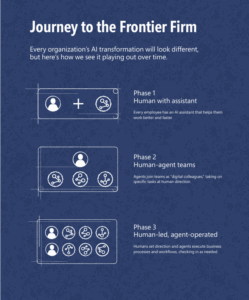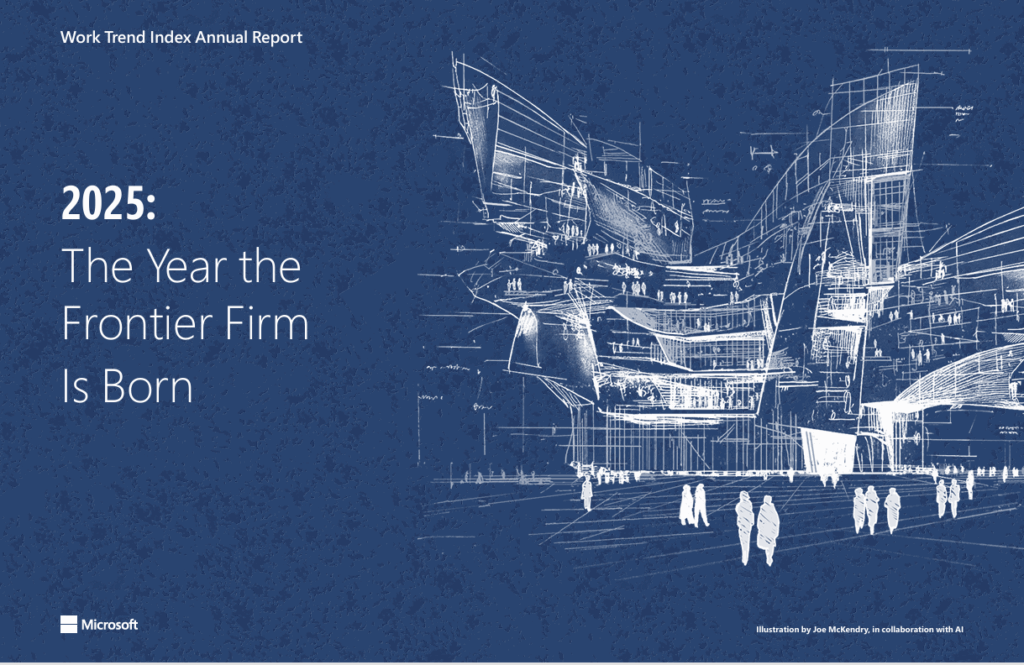The 2025 Microsoft Work Trend Index (WTI) portrays this year as the dawn of the Frontier Firm, Organisations fundamentally built around artificial intelligence (AI) agents, human-AI collaboration, and a redefined role for employees as “agent bosses.” Its global findings are compelling. Eighty-two percent of leaders worldwide plan to integrate AI agents into workforce strategy within the next 12 to 18 months. More than half of leaders say productivity must rise, even though 80 percent of workers admit that they lack the time or energy to keep pace. A quarter of firms have already scaled AI across the organisation, while only 12 percent remain in the pilot phase. Clearly, AI is no longer peripheral, it is moving to the core of business strategy and operations.
INDIA CONTEXT
India’s trajectory within this global shift is both ambitious and complex. According to the India findings of the WTI, ninety-three percent of business leaders plan to deploy AI agents to extend workforce capabilities within the next 12 to 18 months, and close to six in ten organisations are already using agents to automate workflows across entire teams. Perhaps most tellingly, nine in ten leaders in India believe that 2025 marks a decisive year to rethink their core strategies and operations, a proportion higher than that seen in any other country surveyed. This illustrates a paradox: while India may not yet match advanced economies in adoption maturity, its leadership ambition and urgency are among the highest in the world.
The paradox is most visible in the comparative global charts of the WTI, particularly on page 21, where India is conspicuously absent. This does not mean India was excluded from the survey indeed, the report incorporates India-specific findings that show overwhelming ambition and intent. But when placed alongside other major economies, India is not represented in the same way. The question, then, is why? Why do India’s statistics not appear in the comparative charts even after being surveyed? And what does this absence imply about the country’s stage of AI adoption and the way it is perceived globally?
FROM ASSISTANTS TO AGENTS: INDIA’S THREE-PHASE TRANSITION

The figure is taken from the Microsoft WTI report, 2025
The WTI outlines three phases in the evolution toward Frontier Firms: (1) humans with AI assistants; (2) human–agent teams; (3) human-led, agent-operated systems.
India’s transition nonetheless mirrors the WTI’s three-phase model of AI evolution: from humans working with assistants, to human-agent teams, and eventually to agent-operated systems under human supervision. In India, the first phase is well underway, with copilots in coding, HR, and finance now common across IT and banking. The second phase is emerging, particularly in sectors such as telecom, logistics, and customer service, where startups and multinationals alike are piloting AI colleagues to handle complex tasks. The third phase, agent-run systems with minimal oversight remains nascent, but is visible in experiments with supply chain automation, predictive fraud detection, and digital agriculture. India is clearly in motion, but the maturity of practices still trails the level of ambition.
BALANCING HUMAN-AGENT RATIO
The Work Trend Index also introduces the idea of the human–agent ratio as a measure of balance between automation and human oversight. For India, this is especially salient. In banking, for example, while AI chatbots manage millions of queries, trust still depends on access to human representatives. In healthcare, AI-driven diagnostics may expand access, but their credibility rests on adequate medical oversight. In education, AI tutors hold promise for expanding reach, but their effectiveness is contingent on maintaining the presence of trained educators. These examples show that India’s AI journey is not just about adoption at scale, but about carefully balancing efficiency with human trust.
THE RISE OF “AGENET BOSS”
The report suggests that every worker will eventually become an “agent boss,” responsible for delegating to and supervising AI systems. In India, this redefinition of roles intersects with deep structural realities. The IT and BPO industries, major employers of young graduates, depend on repetitive, process-driven tasks that are most vulnerable to automation. For new entrants to leap directly into supervisory or agent-management roles, the education system must pivot towards skills of oversight, critical thinking, and ethical judgment skills that are currently underemphasised in many curricula. Moreover, India’s persistent gender gap in labour force participation complicates the picture. While AI-enabled flexible work offers potential for greater inclusion, women’s access to AI skilling opportunities remains uneven, raising the risk of widening digital inequality.
SKILLING AND WORKFORCE CHALLENGES
India’s skilling challenge is therefore both urgent and unique. LinkedIn data indicates that AI-related job postings in India have grown by more than 650 percent since 2016, yet the supply of graduates trained in AI roles remains inadequate. While the All India Council for Technical Education (AICTE) and other bodies have begun embedding AI modules into higher education, these remain preliminary. What is needed is a systemic approach to building an AI-ready workforce, one that includes not only formal education but also vocational skilling, continuous professional development, and sector-specific AI literacy initiatives.
OPPORTUNITIES AND RISKS
The opportunities of this transition are immense. AI can democratise expertise in areas such as healthcare, education, and legal access, especially in rural and underserved regions. India’s vibrant startup ecosystem, already among the top three globally, can leapfrog traditional models and create AI-first firms that compete on a global stage. Just as India became the outsourcing hub of the IT revolution, it can emerge as the global centre for agent management, supervision, and governance. Yet risks remain just as stark. Automation threatens employment in India’s IT and BPO industries, creating the potential for significant social disruption. Digital inequality may deepen if AI literacy and access are not equitably distributed. And although India has enacted the Digital Personal Data Protection Act (2023), the country still lacks a comprehensive AI regulatory framework to address questions of accountability, liability, and ethical deployment.
CONCLUSION
The Work Trend Index frames 2025 as the year the Frontier Firm is born. For India, this moment is not only about catching up but also about defining its path forward. The omission of India from global adoption charts is a reminder that ambition alone does not translate into maturity. Yet the overwhelming intent of Indian leaders to embrace AI suggests that the gap is not permanent. If India can build the institutional capacity, data frameworks, and inclusive skilling ecosystems to match its ambitions, the AI frontier may replay the IT revolution of the 1990s catapulting the country into a position of global leadership.
Still, the lingering question remains: why are India’s statistics missing from the comparative charts of the Work Trend Index, even after it was surveyed? What does this absence represent not only for how the world perceives India’s AI journey, but also for how India chooses to define its own frontier?
Read tthe full report here: https://news.microsoft.com/annual-work-trend-index-2025/

